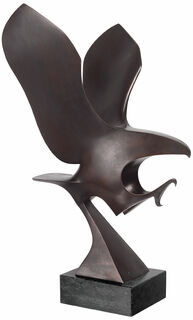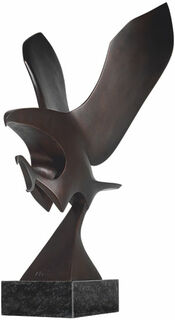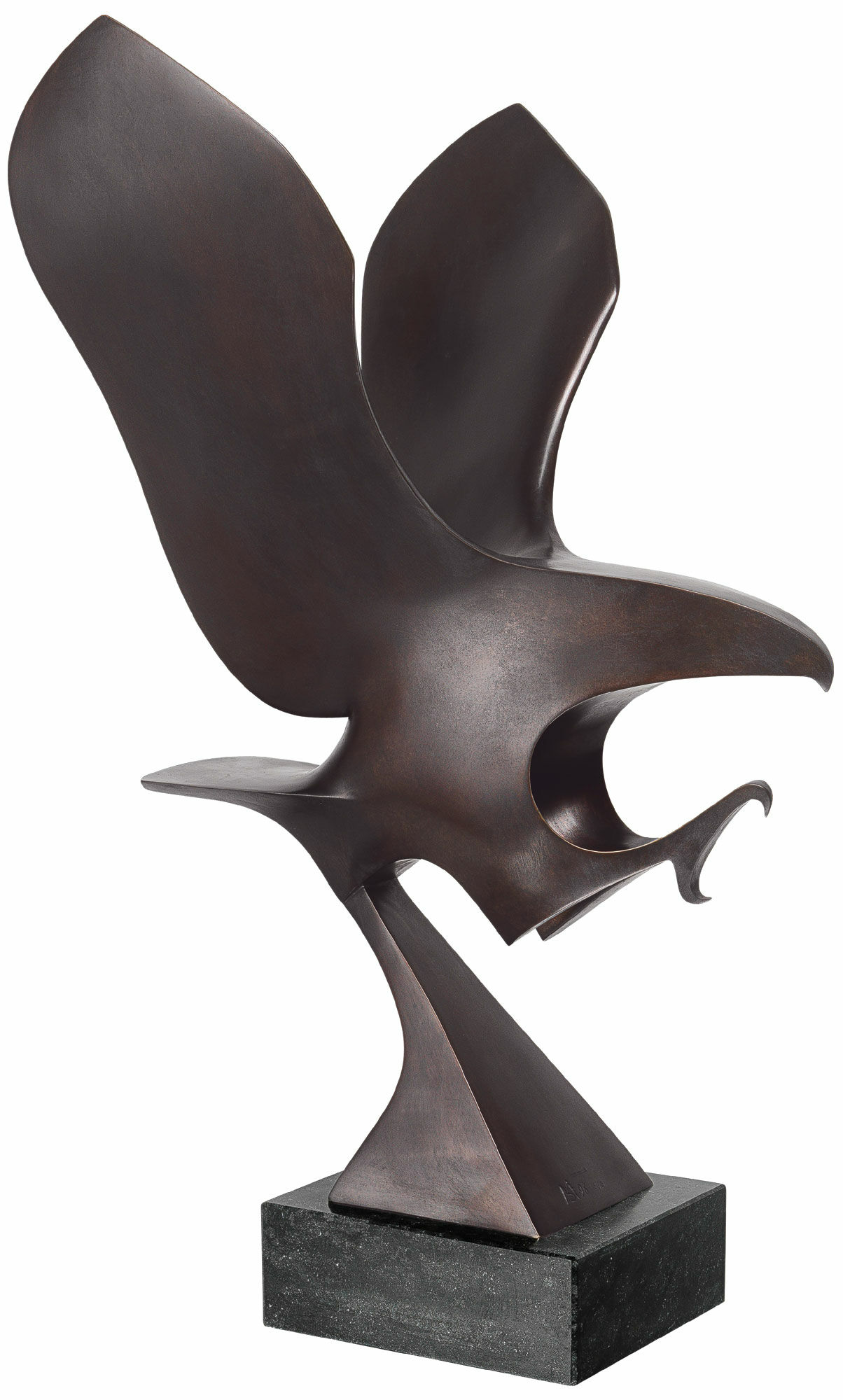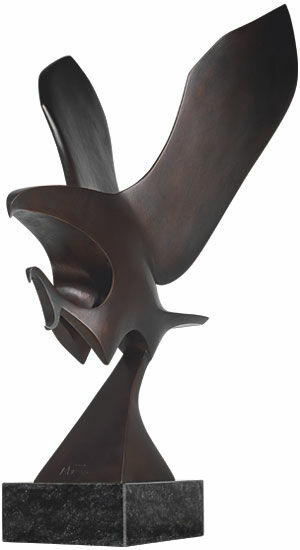Sculpture "Elegance (Eagle)", bronze
Sculpture "Elegance (Eagle)", bronze
Quick info
limited, 9 copies | numbered | signed | hallmarked | bronze | patinated | polished | size 25 x 56 x 38 cm (w/h/d) | weight 15 kg
Detailed description
Sculpture "Elegance (Eagle)", bronze
SIMES' eagle sculpture is characterised in particular by its clear form and reduced mode of representation. The artist concentrates entirely on the essential features of his motif and abstracts its characteristic traits. At the same time, the naturalness of the proportions is always preserved, and the sculpture radiates dynamism and aesthetics.
Fine bronze sculpture, cast using the Lost-Wax-Process, patinated and polished by hand. Limited edition of 9 copies, numbered, signed and hallmarked with the foundry stamp. Size 25 x 56 x 38 cm (w/h/d). Weight 15 kg.
About SIME
The painter and sculptor SIME, born Mladen Simunovic in 1968 in Gorica, Croatia, belongs to a young generation of artists who have long since ceased to think of the question of traditional ties and modernity as opposites. Instead, his sculptures show that the "old" themes of art are far from exhausted for him: He is always able to gain new, refreshingly subjective perspectives from them.
SIME was trained at the Educational Centre for Applied Art and Design (1985-1987) and later studied sculpture at the Academy of Fine Arts in Zagreb (1988-1993). He likes to form his sculptural work based on numerous preparatory drawings. A process in which, as it were, what later takes on plastic form in clay, plaster, wood or bronze is gradually "formed" on drawing paper.
His sculptures are characterised particularly by their clear forms and their reduced mode of representation. The artist concentrates entirely on the essential features of his motifs and abstracts their characteristic features. In doing so, the naturalness of the proportions is always preserved, and the sculptures radiate dynamism and aesthetics.
SIME has been living in Munich as a freelance sculptor since 1999 and is a member of the Professional Association of Visual Artists. He has been awarded several art prizes in Croatia and has recently had more exhibitions throughout Germany.
An alloy of copper with other metals (especially with tin) used since ancient times.
When casting bronze, the artist usually applies the lost-wax technique which is dating back more than 5000 years. It's the best, but also the most complex method of producing sculptures.
First, the artist forms a model of his sculpture. It is embedded in a liquid silicone rubber mass. Once the material has solidified, the model is cut out. The liquid wax is poured into the negative mould. After cooling down, the wax cast is removed from the mould, provided with sprues and dipped into ceramic mass. The ceramic mass is hardened in a kiln, whereby the wax flows out (lost mould).
Now we finally have the negative form, into which the 1400° C hot molten bronze is poured. After the bronze had cooled down, the ceramic shell is broken off and the sculpture is revealed.
Now the sprues are removed, the surfaces are polished, patinated and numbered by the artist himself or, to his specifications, by a specialist. Thus, each casting becomes an original work.
For lower-quality bronze castings, the sand casting method is often used which, however, does not achieve the results of a more complex lost-wax technique in terms of surface characteristics and quality.
Term for an art object (sculpture, installation), which is produced in multiple copies in a limited and numbered edition according to the artist‘s will.
Artist's multiples have been called the most accessible and affordable art on the market.
A plastic work of sculptural art made of wood, stone, ivory, bronze or other metals.
While sculptures from wood, ivory or stone are made directly from the block of material, in bronze casting a working model is prepared at first. Usually, it is made of clay or other easily mouldable materials.
The prime time of sculpture after the Greek and Roman antiquity was the Renaissance. Impressionism gave a new impulse to the sculptural arts. Contemporary artists such as Jorg Immendorf, Andora, and Markus Lupertz also enriched sculptures with outstanding works.






